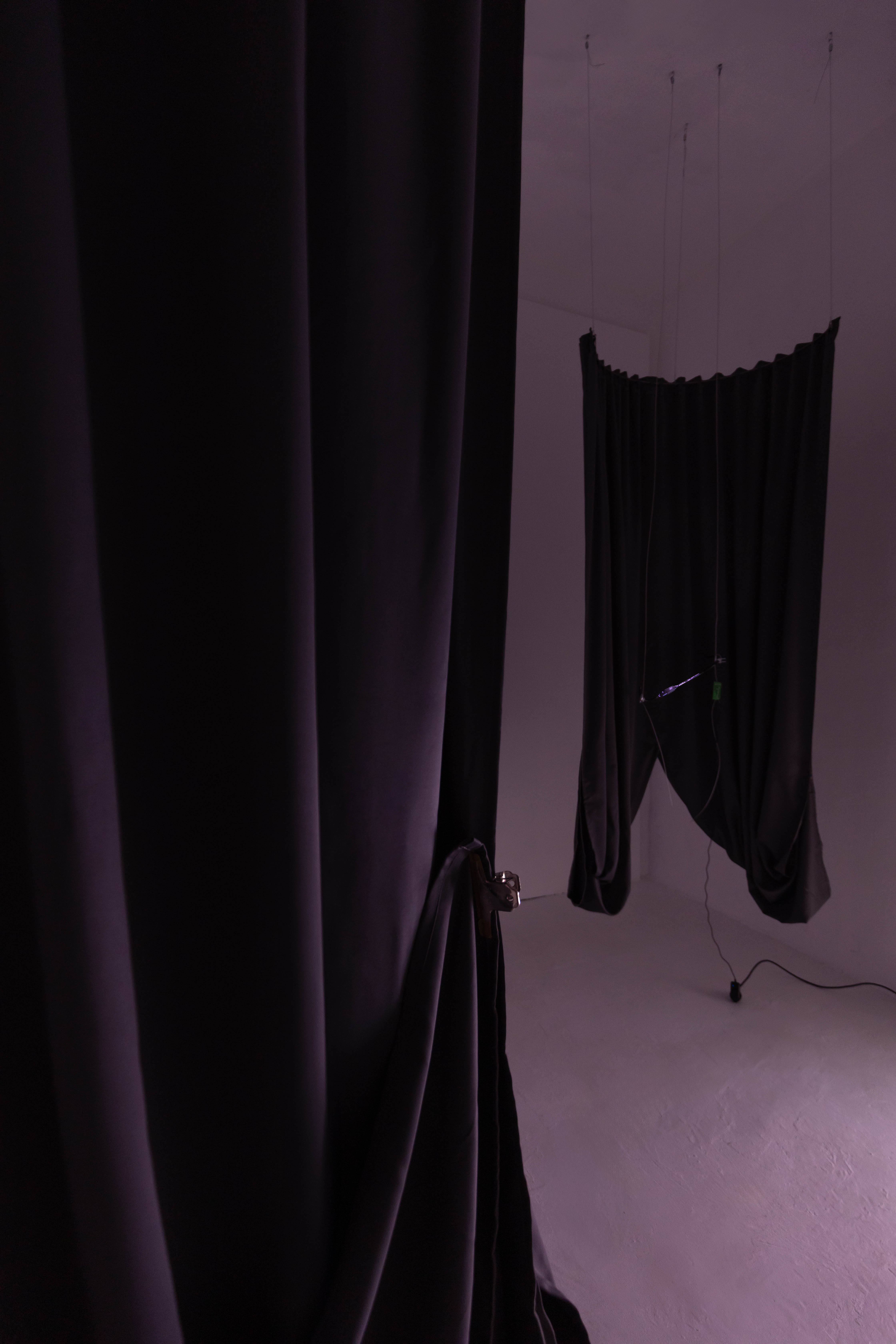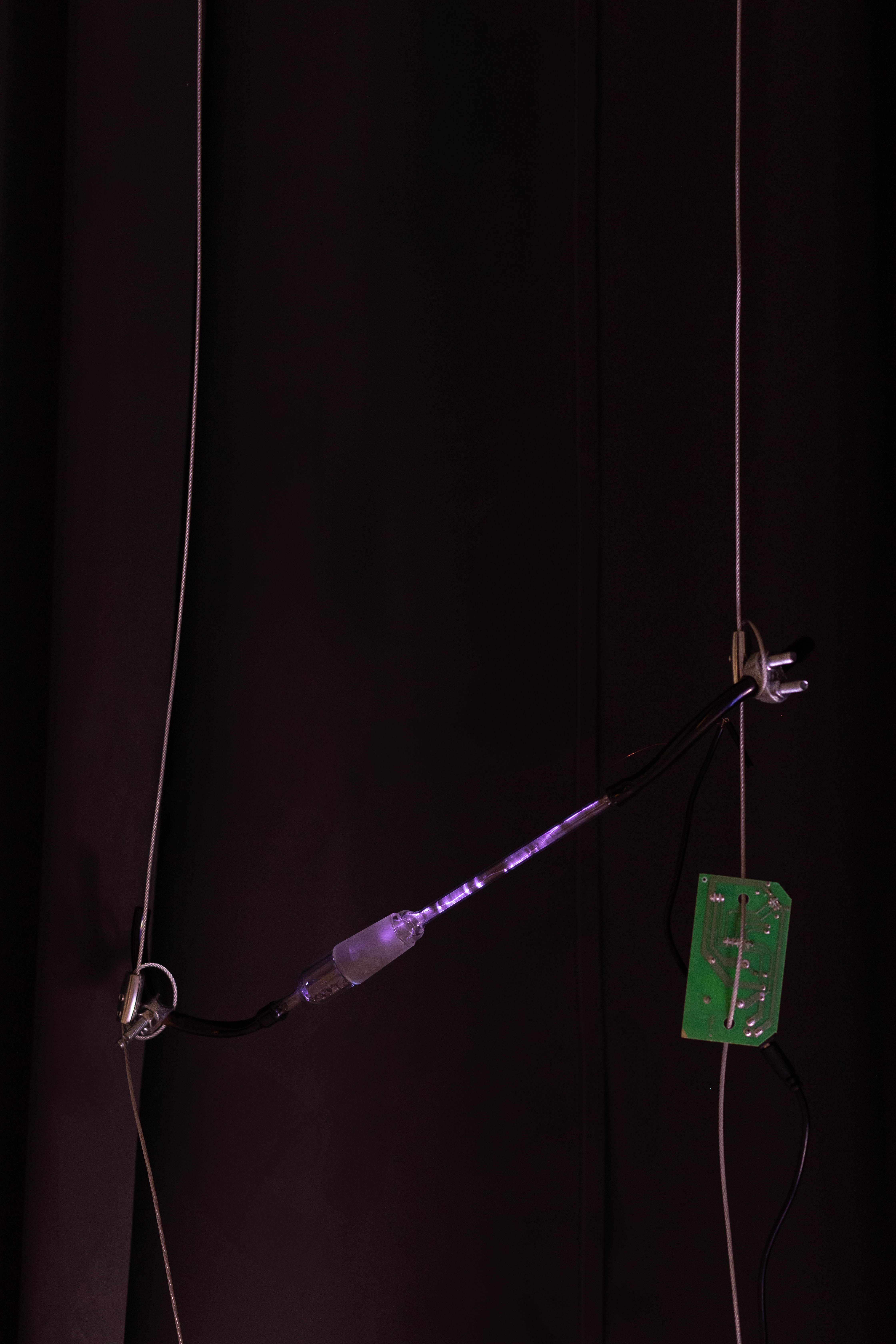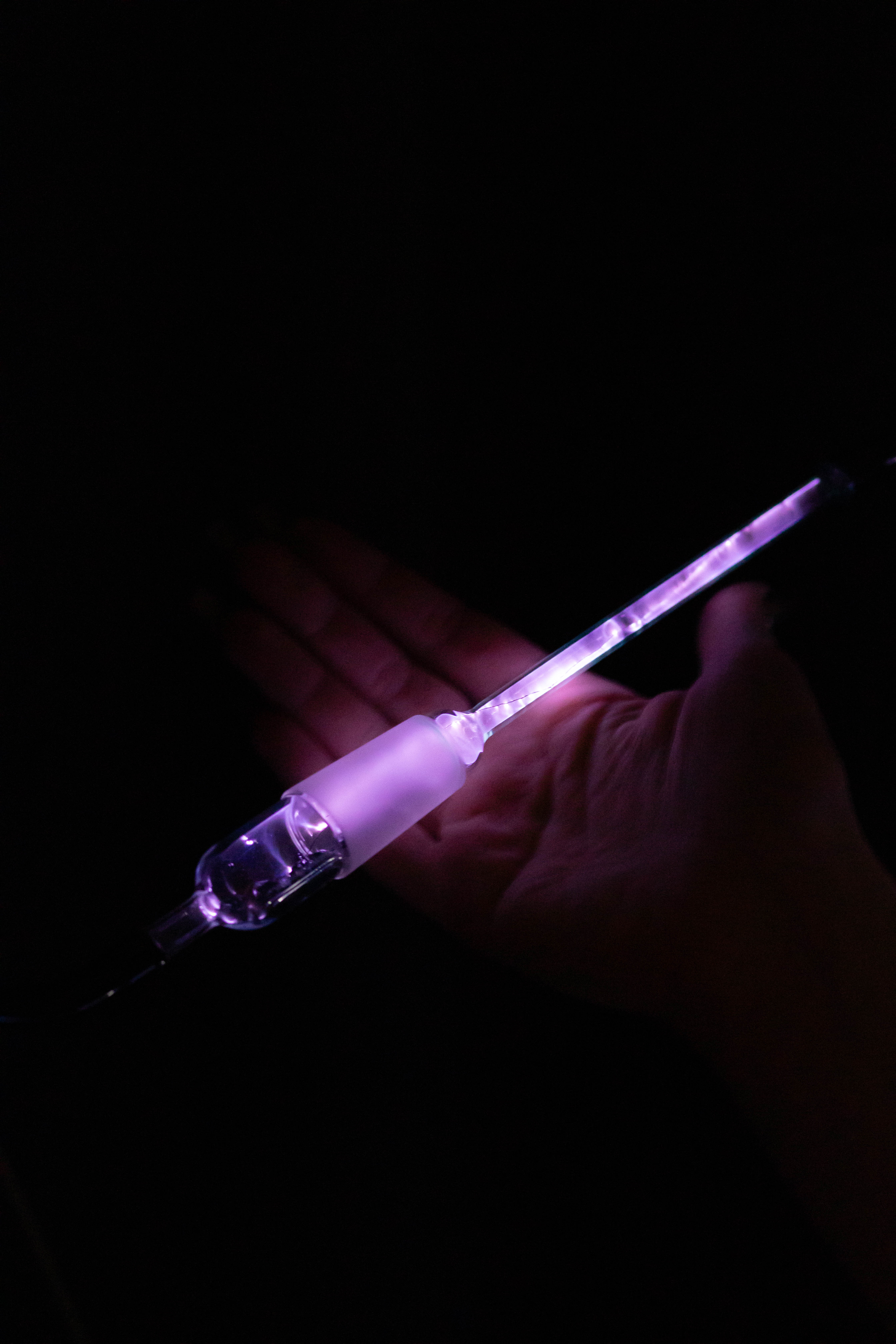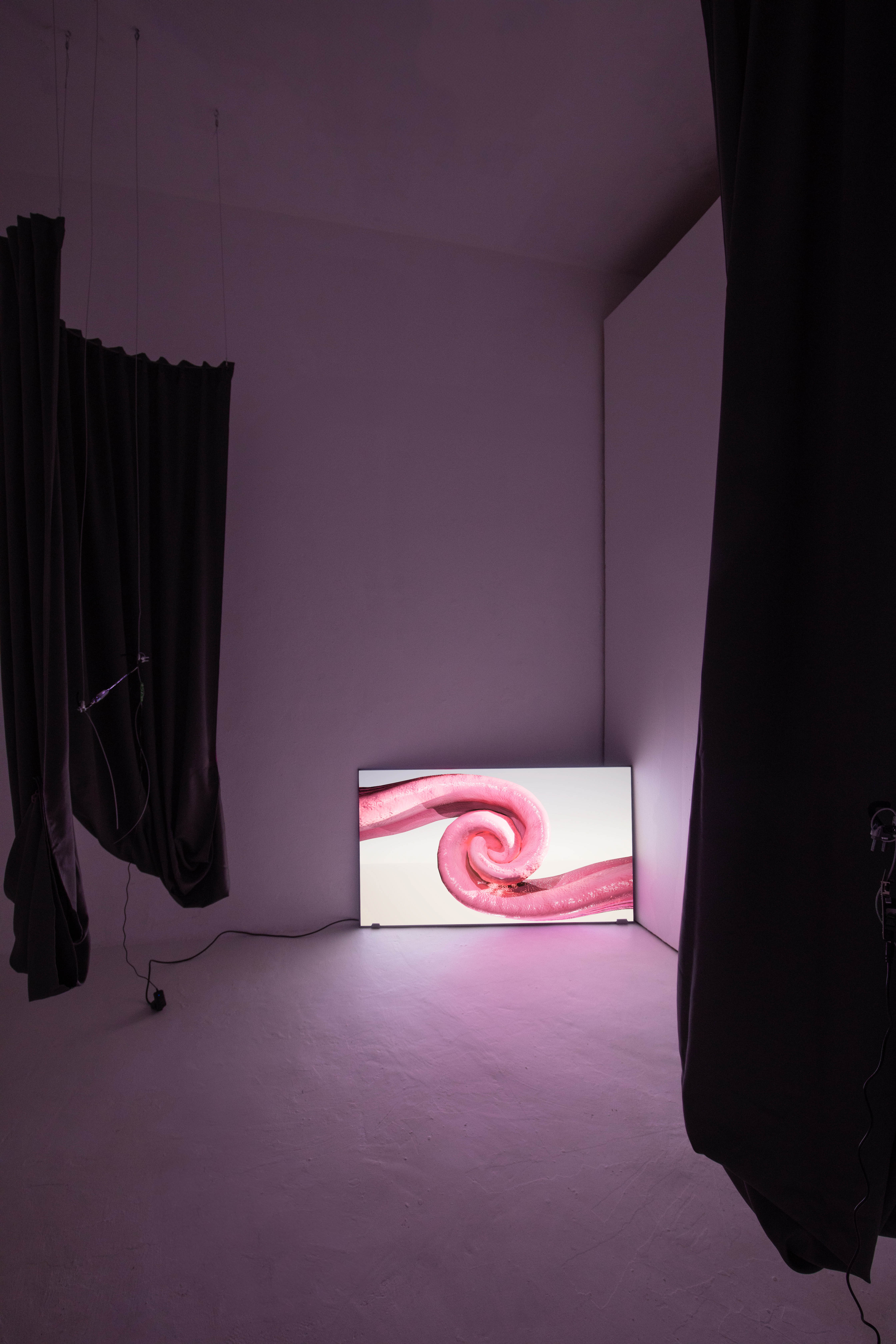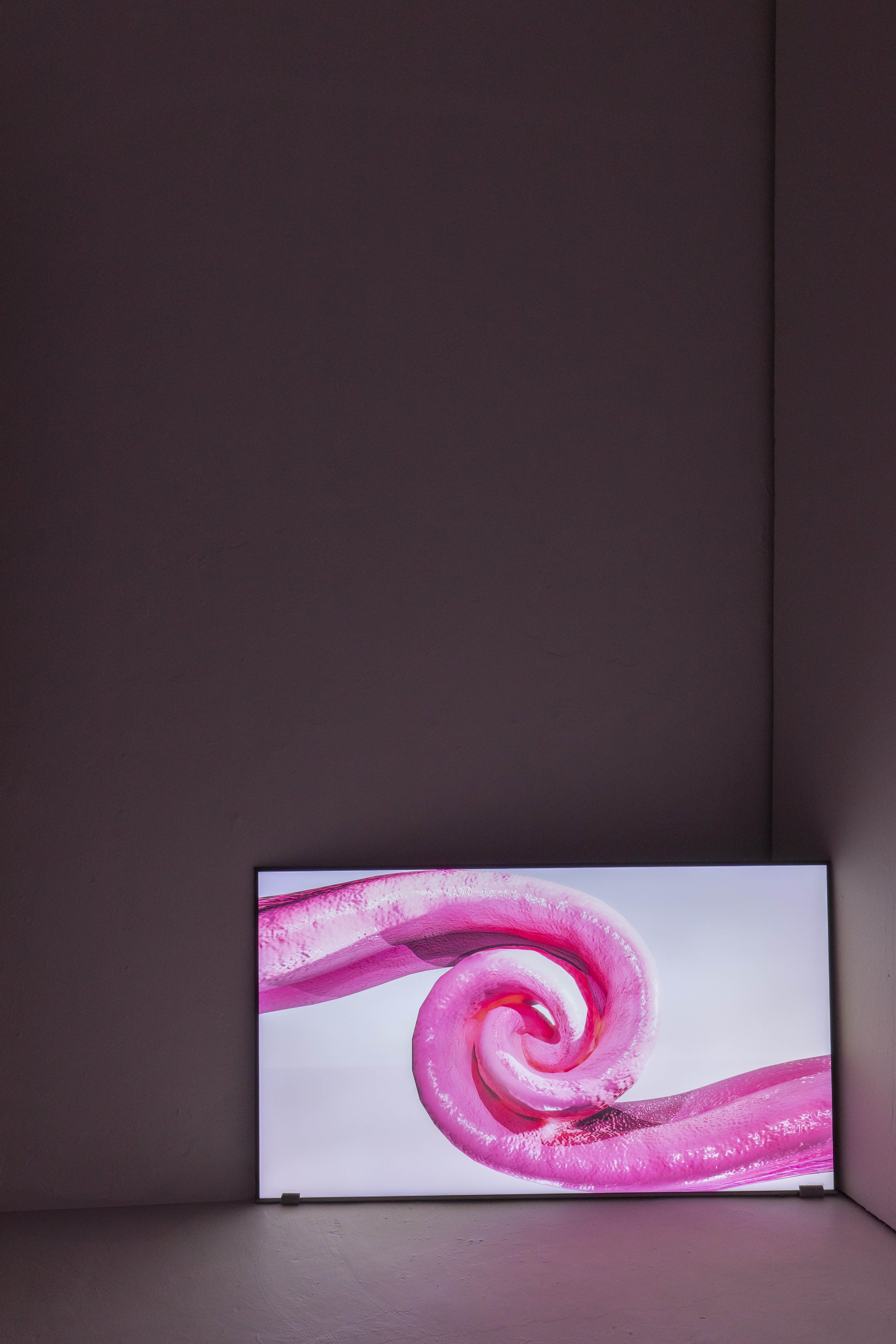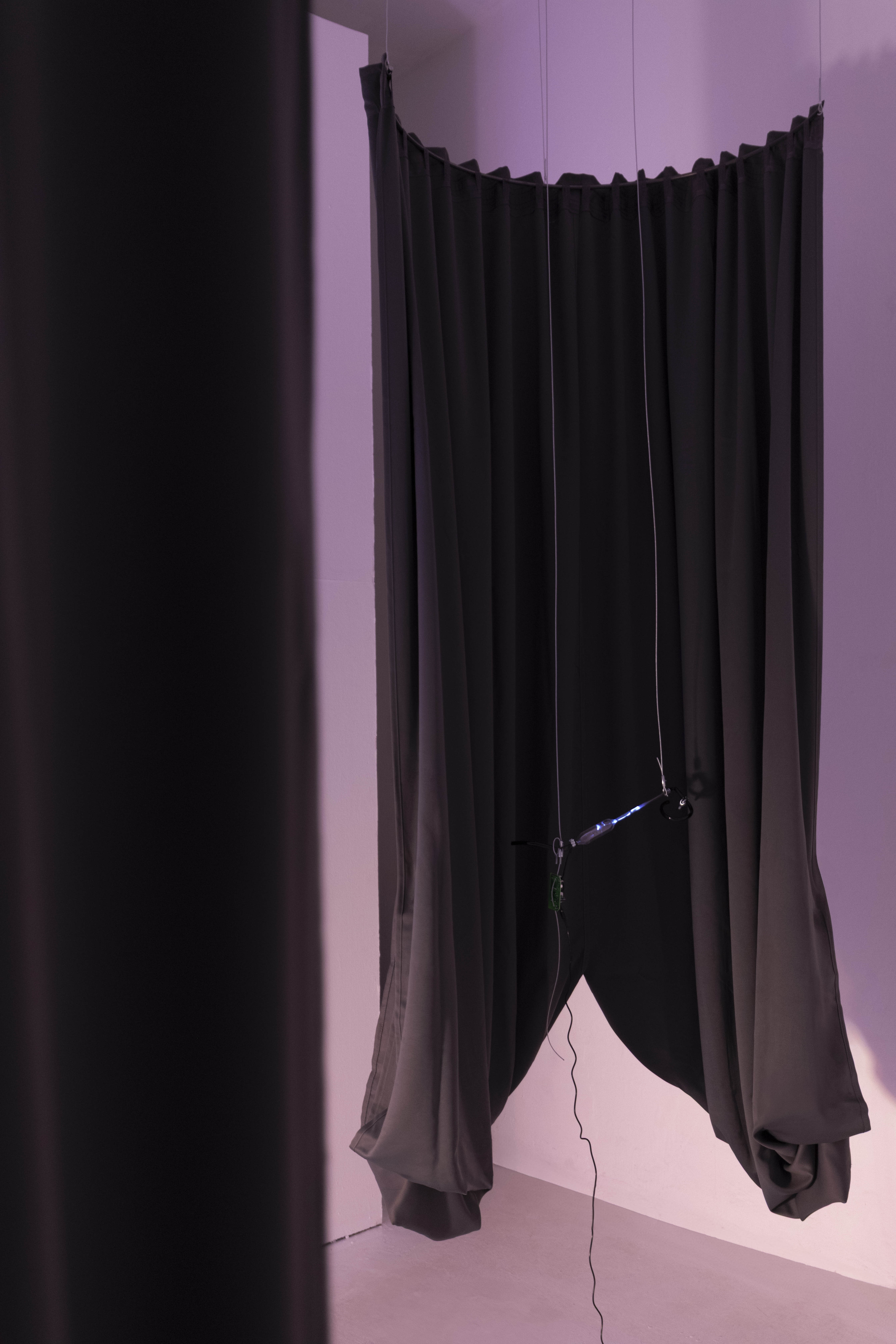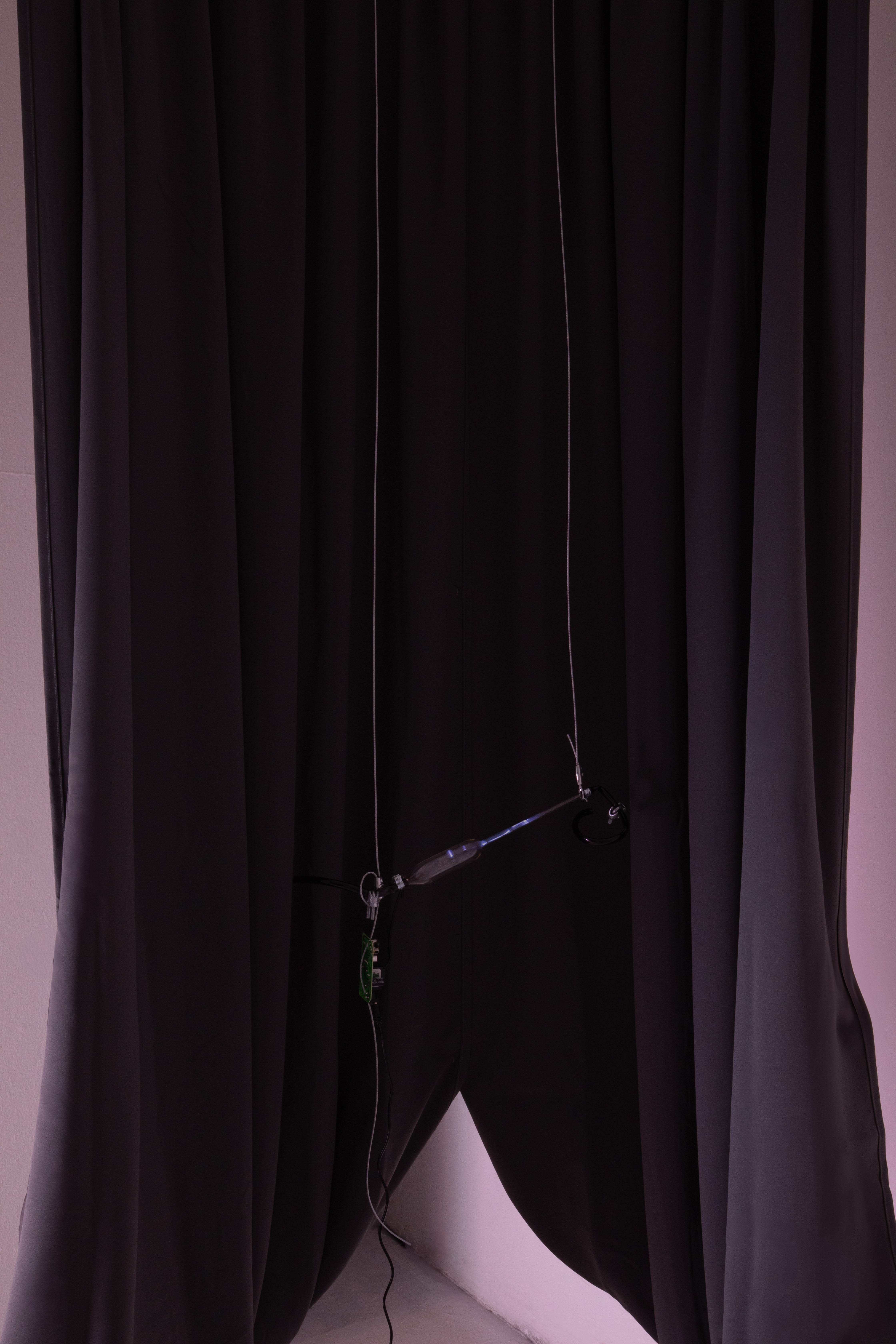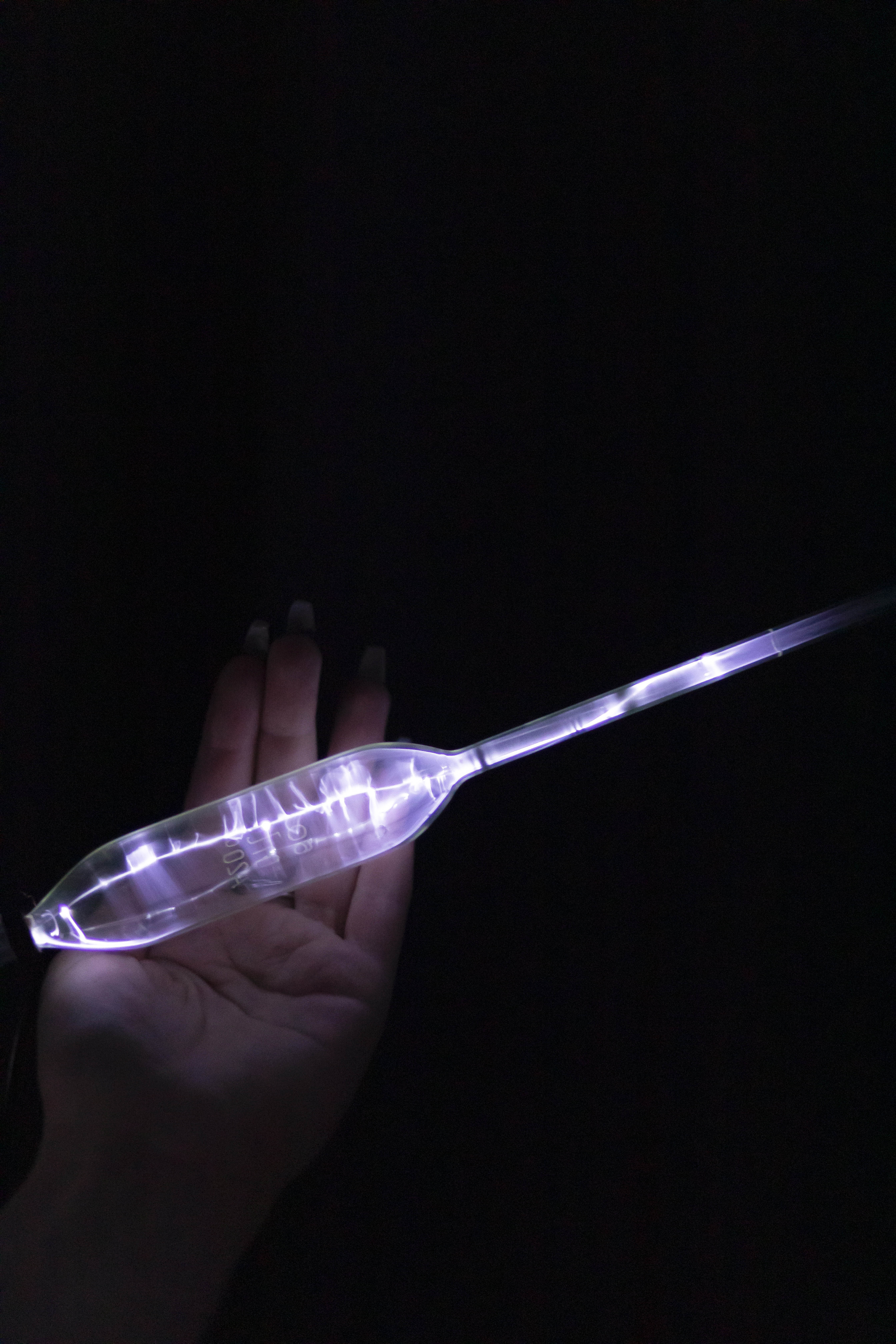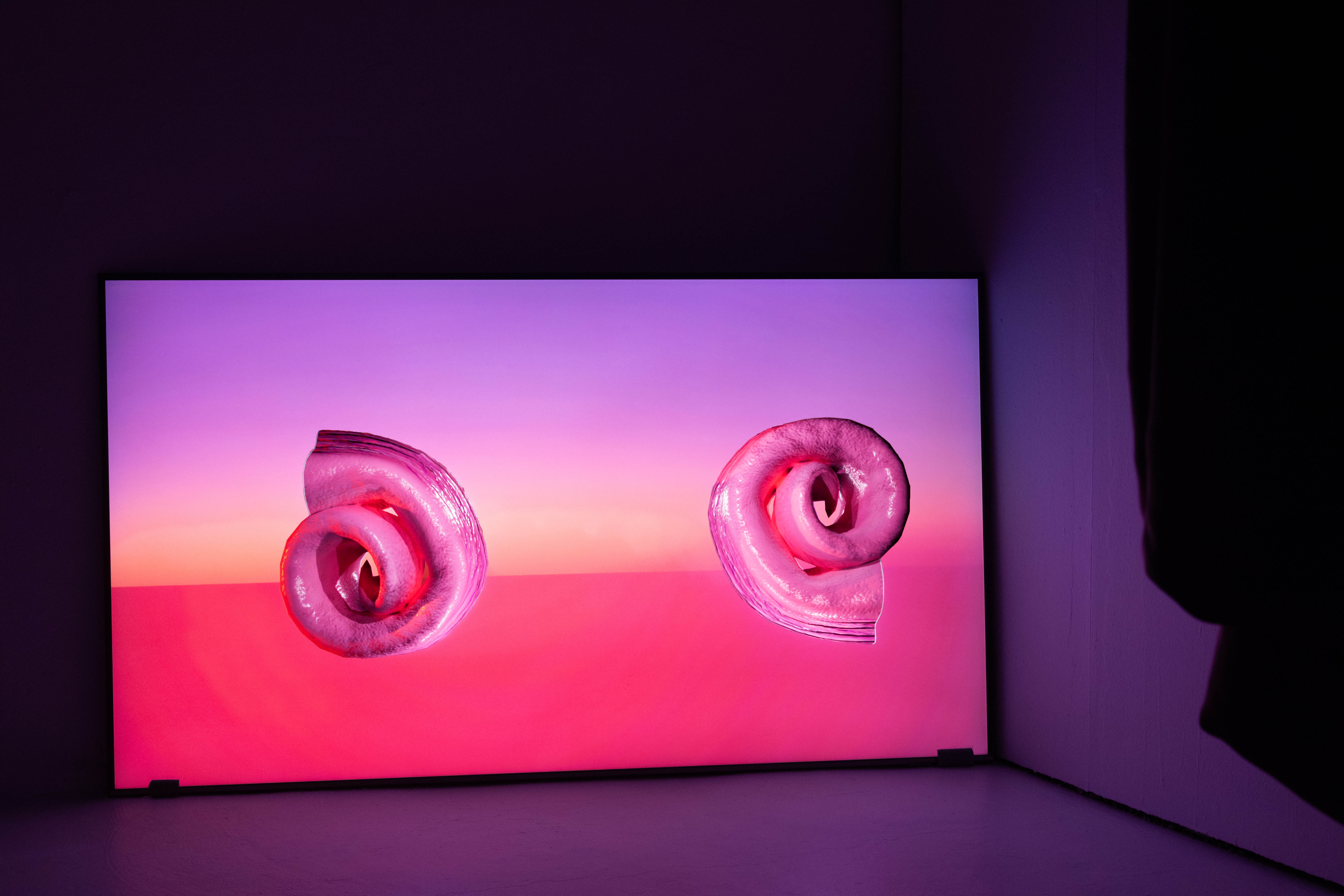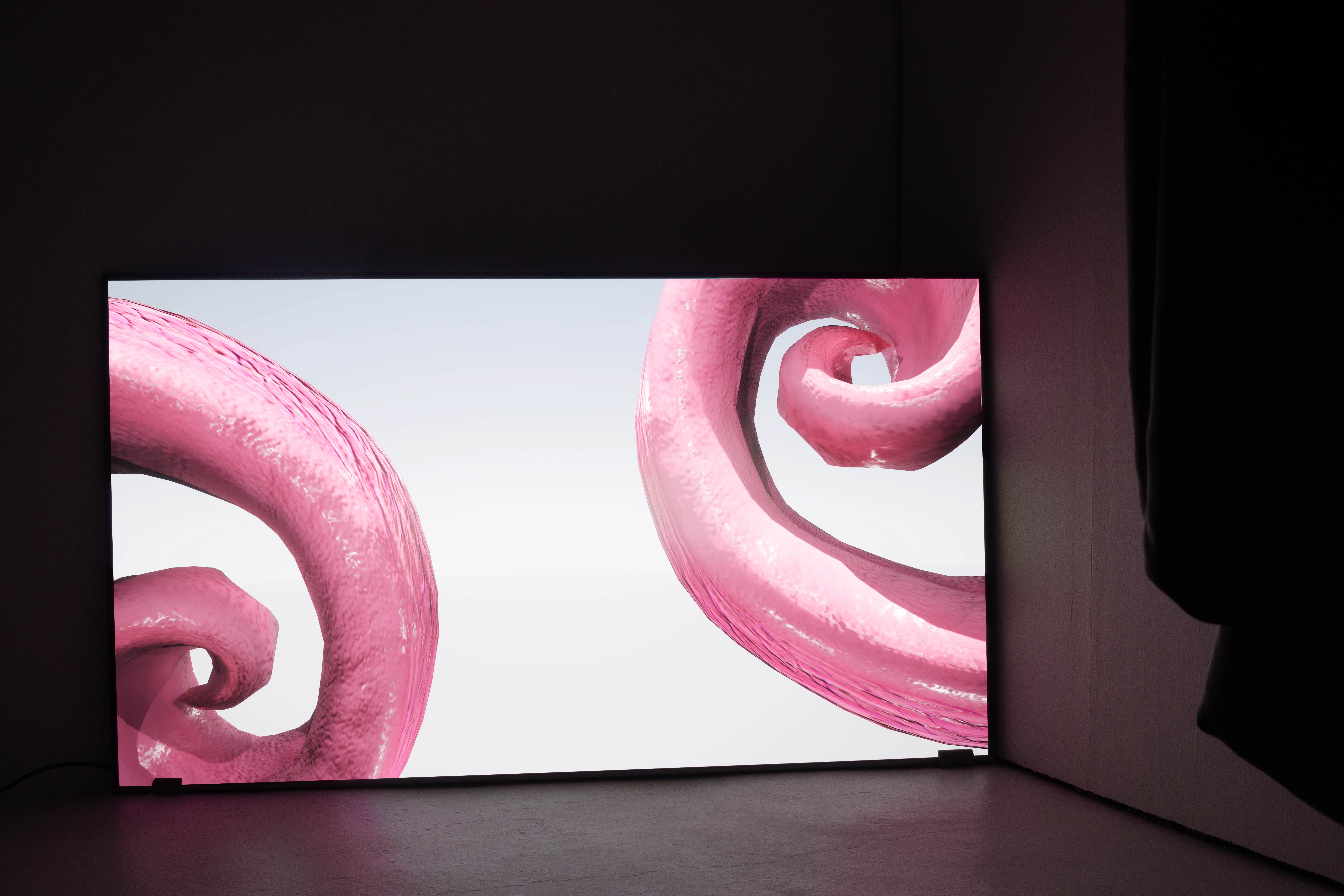wish you were offline
Expressing an urgency or desire to connect in a world fully saturated by online media, ‘Wish You Were Offline’—Brigita Kasperaitė’s solo show at Kunsthalle.Ost—turns post-internet aesthetics on their head. Rather than simply employing digital strategies to create objects that exist in the real world, Kasperaitė exposes the raw materials that enable our digital lives, unearthing their divine powers and latent symbolism.
Silicon is an element that is crucial for metabolic processes in plants and, as a gemstone, is said to carry protective and healing properties. It is best known, however, for its use in semiconductor electronics, essential to the transistors and integrated circuit chips found in smartphones and computers. It also famously lends its name to the region in Northern California where many tech companies are headquartered.
Drawing inspiration from the Neolithic motifs and discoveries in Lithuanian anthropologist Marija Gimbutas’ late archeological writings, Kasperaitė dives into the interconnectedness of pre-Christian symbolism with elements of contemporary digital technology. In Gimbutas’ book ‘The Language of the Goddess,’ she revisits the world of earth-centered cultures and ancient matriarchal societies, with special attention to their symbolic artifacts—serpent motifs and sacred stones among them.
A spiraling curtain bisects the space at Kunsthalle.Ost and hovers slightly above the floor, while two hanging fuchsia-hued glass objects, containing silicon stone and argon gas, emit a visible electrical charge. The electrical current that we depend on for so much of our online existence is rendered visible here—technology is dismembered and made vulnerable, demystifying its divine stronghold.
The circuitous qualities of these glowing objects mirror the visual language of the exhibition’s main video work, Mother Tongue. In it, a too-hot sun is being gently licked—perhaps to cool it down? But the raging fire persists, threatening to engulf everything in its path.
The video hints toward an impending eco-disaster but also insists on the important role that fire plays in regenerating lands and cultures. Unable to dull the flames, the serpent-like tongues begin to spiral towards one another. The amalgamated “mother tongue” that emerges here speaks to the inevitable circularity of nature, which will continue independent of the relentless human drive for extraction.
Kasperaitė’s work here captures a kind of techno-paganism, engaging as it does with historical and contemporary forms of myth-making to address a disconnect from the earthly origins of many of our online tools, as well as the layers of history (and speculative futures) embedded in the lithic elements that make up our everyday lives.
Text by Alison Hugill
Silicon is an element that is crucial for metabolic processes in plants and, as a gemstone, is said to carry protective and healing properties. It is best known, however, for its use in semiconductor electronics, essential to the transistors and integrated circuit chips found in smartphones and computers. It also famously lends its name to the region in Northern California where many tech companies are headquartered.
Drawing inspiration from the Neolithic motifs and discoveries in Lithuanian anthropologist Marija Gimbutas’ late archeological writings, Kasperaitė dives into the interconnectedness of pre-Christian symbolism with elements of contemporary digital technology. In Gimbutas’ book ‘The Language of the Goddess,’ she revisits the world of earth-centered cultures and ancient matriarchal societies, with special attention to their symbolic artifacts—serpent motifs and sacred stones among them.
A spiraling curtain bisects the space at Kunsthalle.Ost and hovers slightly above the floor, while two hanging fuchsia-hued glass objects, containing silicon stone and argon gas, emit a visible electrical charge. The electrical current that we depend on for so much of our online existence is rendered visible here—technology is dismembered and made vulnerable, demystifying its divine stronghold.
The circuitous qualities of these glowing objects mirror the visual language of the exhibition’s main video work, Mother Tongue. In it, a too-hot sun is being gently licked—perhaps to cool it down? But the raging fire persists, threatening to engulf everything in its path.
The video hints toward an impending eco-disaster but also insists on the important role that fire plays in regenerating lands and cultures. Unable to dull the flames, the serpent-like tongues begin to spiral towards one another. The amalgamated “mother tongue” that emerges here speaks to the inevitable circularity of nature, which will continue independent of the relentless human drive for extraction.
Kasperaitė’s work here captures a kind of techno-paganism, engaging as it does with historical and contemporary forms of myth-making to address a disconnect from the earthly origins of many of our online tools, as well as the layers of history (and speculative futures) embedded in the lithic elements that make up our everyday lives.
Text by Alison Hugill
